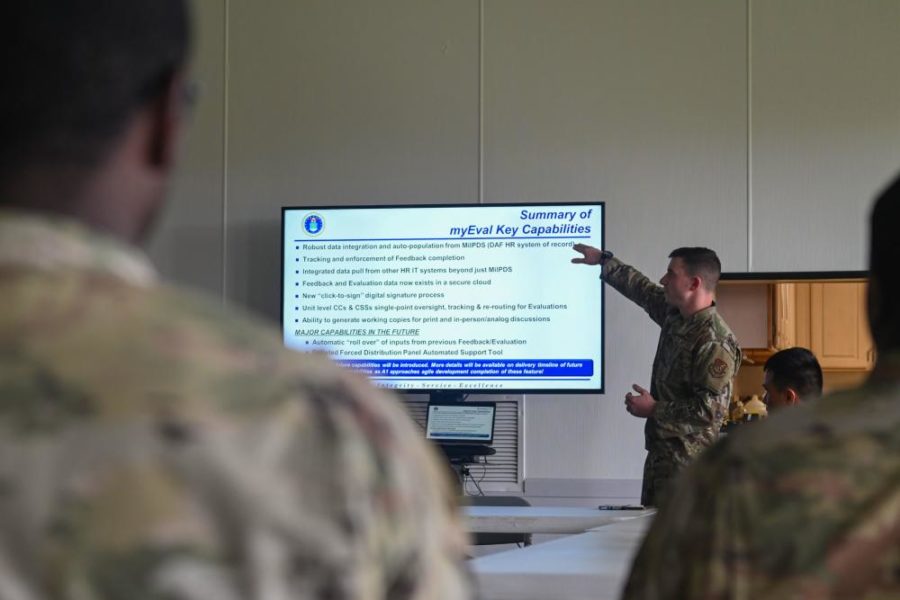The Air Force launched a revamped version of the personnel evaluation web application myEval earlier this year in an effort to improve on last year’s 1.0 version, which was so difficult to use that the service stopped using it in November.
“Our initial attempt at the system was overly reliant on custom code and failed to leverage the new software as a service in the way it was designed,” Air Force spokesperson Tech Sgt. Deana Heitzman told Air & Space Forces Magazine. “When the team collectively understood the implications of the initial design, we realized the best path forward was to start over with a completely new design, leveraging lessons learned from myEval 1.0, as well as those from other organizations’ implementation of this type of capability.”
An Air Force official said myEval 2.0 launched March 13 and has fewer pop-up windows and other hoops to jump through, such as having to download and re-upload PDFs in order to input personal data. For now, only chief master sergeants and officers can access myEval 2.0, but access will expand to other ranks in the coming months, the official said. Air Force Times first reported the news on May 9.
When it was first introduced in January 2022, myEval 1.0 was meant to be a “21st century application” that would integrate personnel information from other applications and be easy for all stakeholders to use. Talent management systems like myEval are important for submitting promotion or award packages.
“The myEval application reduces administrative burdens, enhances the user experience, and provides leaders with performance data to assist in making informed talent management decisions,” said Lt. Gen. Brian Kelly, then-Deputy Chief of Staff for Manpower, Personnel, and Services, in a statement shortly before the platform came out.
Instead, users reviled myEval, saying the system was confusing, buggy, and frequently failed. Many said it often took several tries to perform a single step before forms or changes were recorded; data that was pulled was incorrect and hard to change; character limits and spacing created appearance issues on performance reviews; and other problems. Airmen expressed concern on social media that the problems could potentially cost promotions, assignments, or awards, not to mention the day-to-day stress of dealing with a dysfunctional program.
“The system is not able to seamlessly process reports into a member’s official records,” Chief Master Sergeant of the Air Force JoAnne S. Bass acknowledged in a November Facebook post about myEval when the system was put on hold.
Heitzman said there is no direct tie between myEval and retention, which has ranged from 89.5 percent to 91 percent for enlisted Airmen and from 93.1 percent to 94 percent for officers over the past five years. But hopefully the digital transformation and modernization of the Air Force talent management network will make day-to-day life in the service easier.
“We understand the key role our Talent Management Systems play in the Airmen experience—and by extension, the choices they make, to include retention—and we are committed to remaining agile while developing customer-centric solutions,” Heitzman said.
There still may be some kinks to work through, and Heitzman said the Air Force will “continue to evolve this product as we continue our agile approach.”
